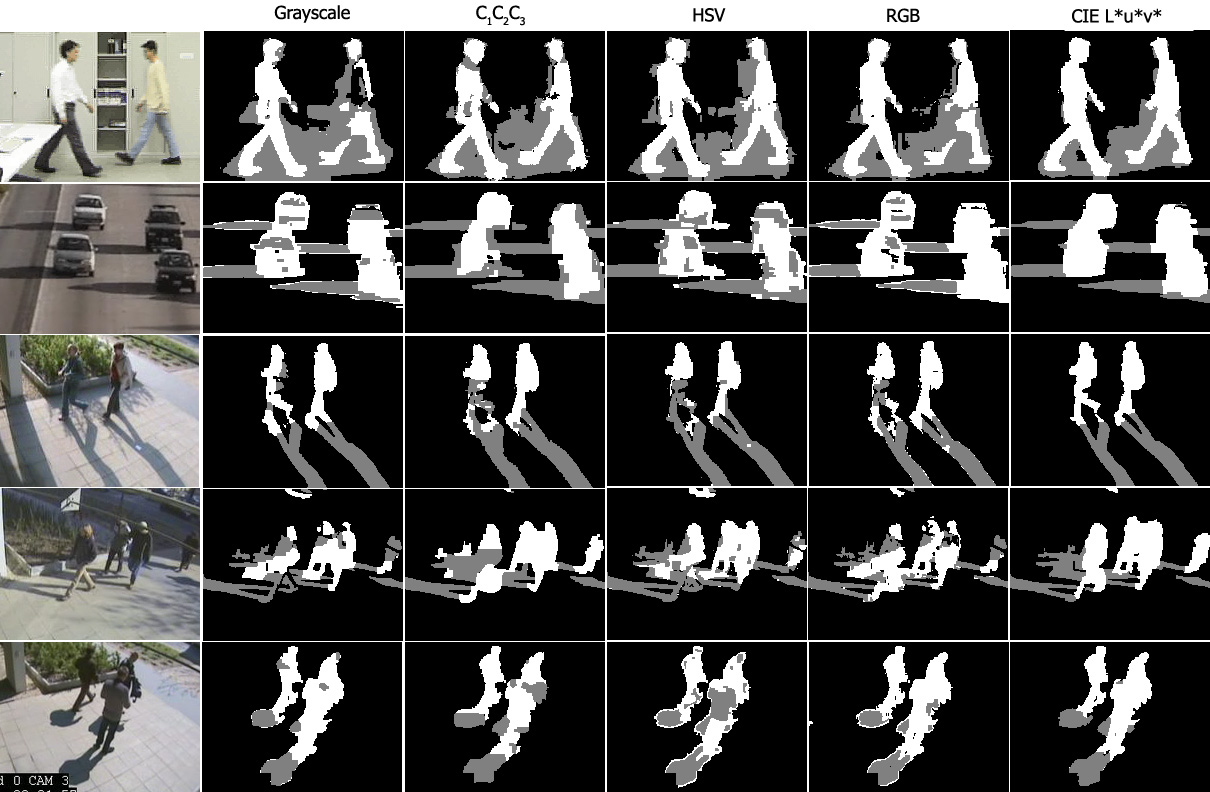Color Models of Shadow Detection in Video Scenes
In this work we address the problem of appropriate modelling of shadows in color images. While some previous works compared the different approaches regarding their model structure, a comparative study of color models has still missed. We attack a continuous need for defining the appropriate color space for this main surveillance problem. We introduce a statistical and parametric shadow model-framework, which can work with different color spaces, and perform a detailed comparison with it. We show experimental results regarding the following questions:
What is the gain of using color images instead of grayscale ones?
What is the gain of using uncorrelated spaces instead of the standard RGB?
Chrominance (illumination invariant), luminance, or "mixed" spaces are more effective?
In which scenes are the differences significant?
For the comparison, we developed a parametric model: we extracted feature vectors from the actual and mean background values of the pixels and applied shadow detection as solving a classification problem in that feature space. This approach is widespread in the literature, and the key points are the way of feature extraction, the color space selection and the shadow-domain description in the feature space.
The feature selection is based on a physical approach on shadow detection [1] with marking that its model assumptions may not be fulfilled in real-world video scenes. Instead of constructing a more difficult illumination model, we overcome the appearing artifacts with a statistical description. Here we note that parameter estimation and re-estimation is usually a weak point in similar approaches. A main advantage of our shadow model is that it has only six free parameters, moreover, we also proposed an adaptive change-following procedure. A Markov Random Field is used to enhance the quality of the segmentation.
With this model, we compared several well known color spaces, and observed that the appropriate color space selection is an important issue regarding the segmentation results. We validated our method on five video shots, including well-known benchmark videos and real-life surveillance sequences, indoor and outdoor shots, which contain both dark and light shadows. Experimental results show that CIE L*u*v* color space is the most efficient both in the color based clustering of the individual pixels and in the case of Bayesian foreground-background-shadow segmentation (Fig. 1).
Fig. 1 MRF segmentation results with different color models.
Results were partially published in IJIST journal [2] and in VISAPP 2007 conference [3].
References
[1] D. A. Forsyth: "A novel algorithm for color constancy", International Journal of Computer Vision, 5(1):5-36, August 1990.
[2] Cs. Benedek and T. Szirányi: "Study on Color Space Selection for Detecting Cast Shadows in Video Surveillance," International Journal of Imaging Systems and Technology, Special Issue on Applied Color Image Processing, vol. 17, no. 3, pp. 190-201, Wiley, 2007
[3] Cs. Benedek and T. Szirányi: ”Color Models of Shadow Detection in Video Scenes”, International Conference on Computer Vision Theory and Applications (VISAPP), INSTICC, vol. IFP/IA, pp. 225-232, Barcelona, Spain, March 8-11, 2007

